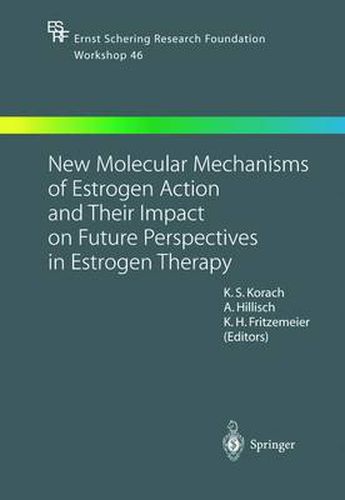Readings Newsletter
Become a Readings Member to make your shopping experience even easier.
Sign in or sign up for free!
You’re not far away from qualifying for FREE standard shipping within Australia
You’ve qualified for FREE standard shipping within Australia
The cart is loading…






This title is printed to order. This book may have been self-published. If so, we cannot guarantee the quality of the content. In the main most books will have gone through the editing process however some may not. We therefore suggest that you be aware of this before ordering this book. If in doubt check either the author or publisher’s details as we are unable to accept any returns unless they are faulty. Please contact us if you have any questions.
From our current knowledge, it is obvious that estrogen action in volves more than reproduction and fertility. Rather, estrogens affect and influence a number of other organ systems such as the immune, cardiovascular and central nervous system as well as the gastrointes tinal tract, urinary tract and skeleton. The importance of estrogens and estrogen receptor activity is appreciated from the spectrum of significant physiological dysfunctions that occur when there is a loss The participants of the workshop VI Preface of the hormone or the receptor activity. Loss of estrogen, however (for instance during menopause), occurs with time and results in a variety of clinical conditions. We know that the developmental loss of estrogen, as seen in clinical cases of aromatase gene mutations and experimental models, has dramatic effects in both men and women alike. The evidence that these effects are mediated through the estrogen receptor(s) is based on similar but not always identical phenotypes as observed in experimental animal models of estrogen receptor mutations as well as the single clinical case of an estrogen receptor alpha mutant patient. Developing an understanding of the spectrum of estrogen in a variety of tissues related to the condition of estrogen loss is a major and highly active clinical as well as basic scientific research area. Following the discovery of a second estrogen receptor and possible receptor ligand-independent activity as well as the genomic and non genomic actions of estrogen, it is clear that the mechanisms of the effects of estrogen are multifaceted.
$9.00 standard shipping within Australia
FREE standard shipping within Australia for orders over $100.00
Express & International shipping calculated at checkout
This title is printed to order. This book may have been self-published. If so, we cannot guarantee the quality of the content. In the main most books will have gone through the editing process however some may not. We therefore suggest that you be aware of this before ordering this book. If in doubt check either the author or publisher’s details as we are unable to accept any returns unless they are faulty. Please contact us if you have any questions.
From our current knowledge, it is obvious that estrogen action in volves more than reproduction and fertility. Rather, estrogens affect and influence a number of other organ systems such as the immune, cardiovascular and central nervous system as well as the gastrointes tinal tract, urinary tract and skeleton. The importance of estrogens and estrogen receptor activity is appreciated from the spectrum of significant physiological dysfunctions that occur when there is a loss The participants of the workshop VI Preface of the hormone or the receptor activity. Loss of estrogen, however (for instance during menopause), occurs with time and results in a variety of clinical conditions. We know that the developmental loss of estrogen, as seen in clinical cases of aromatase gene mutations and experimental models, has dramatic effects in both men and women alike. The evidence that these effects are mediated through the estrogen receptor(s) is based on similar but not always identical phenotypes as observed in experimental animal models of estrogen receptor mutations as well as the single clinical case of an estrogen receptor alpha mutant patient. Developing an understanding of the spectrum of estrogen in a variety of tissues related to the condition of estrogen loss is a major and highly active clinical as well as basic scientific research area. Following the discovery of a second estrogen receptor and possible receptor ligand-independent activity as well as the genomic and non genomic actions of estrogen, it is clear that the mechanisms of the effects of estrogen are multifaceted.